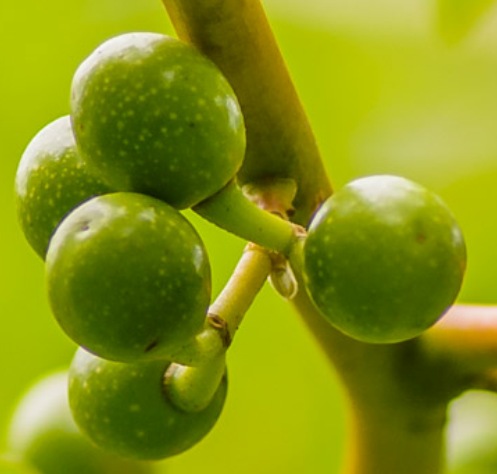

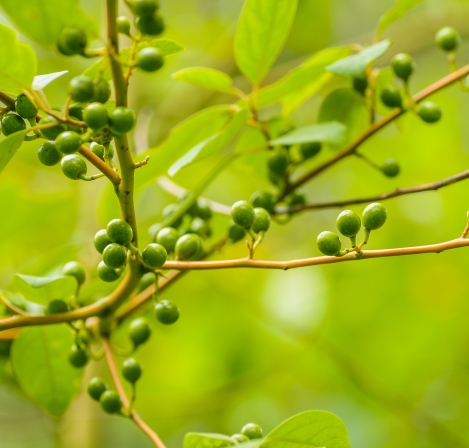
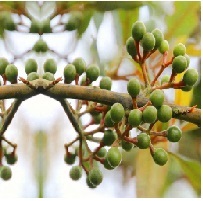
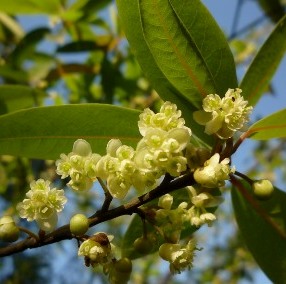
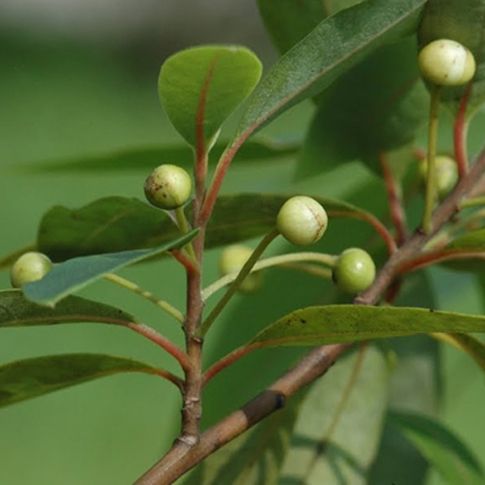
Botanical name Litsea Cubeba
Family Lauraceae
Source Fruits
Origin China
Processing Method Steam Distillation
Color/Consistency A thin, clear, pale yellow to yellow liquid.
Aromatic Summary / Note / Strength of Aroma A top note with a medium aroma, Litsea Cubeba has a crisp, citrus smell. It has been compared to Lemongrass and Lemon Verbena, but it is sweeter than Lemongrass without the musty note, and more accurately citrus in its scent than Melissa.
Blends With Basil, Bay, Black pepper, Cardamom, Cedarwood, Chamomile, Clary sage, Coriander, Cypress, Eucalyptus, Frankincense, Geranium, Ginger, Grapefruit, Juniper, Marjoram, Orange, Palmarosa, Patchouli, Petitgrain, Rosemary, Sandalwood, Tea Tree, Thyme, Vetiver, Ylang-Ylang
Product Abstract
Litsea Cubeba is the botanical name for May Chang, a tree belonging to the Lauraceae family. The tree bears whitish-yellowish flowers that have a characteristic citrusy fragrance and fruits that resemble peppers.
Litsea cubeba, or ‘May Chang,’ is a tree that is native to the Southern region of China, as well as the tropical areas of Southeast Asia such as Indonesia and Taiwan, but varieties of the plant have also been found as far as Australia and South Africa. The tree is very popular in these areas and has been utilized for a variety of reasons for hundreds of years.
History
Litsea cubeba is native to China, Indonesia and other areas of Southeast Asia. In China it grows naturally in the south, and has been cultivated in central and eastern areas to the south of the Yangtze River for its various commercial uses. Smaller quantities of this species also grow wild in Java, Sumatra and Kalimantan, between a height of 700 meters and 2,300 meters above sea level. It is also cultivated in Japan and Taiwan.
Harvesting/Extraction Information
The first method of production is the most popular one for most essential oil production, and that’s steam distillation. In this method, the crushed organic elements of the plant are placed in a glass chamber. Water is then heated in a separate chamber to produce steam
Common Usage
Caution
Dilute before use; for external use only. May cause skin irritation in some individuals; a skin test is recommended prior to use. Contact with eyes should be avoided.
Key constituents
Geranial 37.9–40.6%
Neral 25.5–33.8%
(þ)-Limonene 8.4–22.6%
Methyl heptenone 0.5–4.4%
b-Myrcene 0.5–3.0%
Linalool 1.2–1.7%
Geraniol 0.5–1.6%
Sabinene 0.1–1.6%
Linalyl acetate 0–1.6%
a-Pinene 0.8–1.4%
b-Pinene 0.4–1.2%
Nerol 0.2–1.1%
Quality May be adulterated with synthetic citral.
Safety summary
Hazards Drug interaction; teratogenicity; skin allergy.
Cautions (all routes) Drugs metabolized by CYP2B6.
Cautions (oral) Diabetes medication, pregnancy.
Cautions (dermal) Hypersensitive, diseased or damaged skin, children under 2 years of age.
Maximum daily oral dose in pregnancy 56 mg
Maximum dermal use level 0.8%
Our safety advice
We recommend a dermal maximum of 0.8% to avoid skin sensitization. This is based on the IFRA maximum for citral of 0.6% for body oils and lotions and 75% citral content. We recommend a daily oral maximum in pregnancy of 56 mg. This is based on 74% citral content, with dermal and oral citral limits of 0.6% and 0.6 mg/kg.
Organ-specific effects
Adverse skin reactions Undiluted may chang oil was moderately to markedly irritating to rabbits, and was strongly irritating to both mice and pigs; tested at 8% on 25 volunteers it was neither irritating nor sensitizing. It is non-phototoxic. In a study of 200 consecutive dermatitis patients, three were sensitive to 2% may chang oil on patch testing. Citral can induce sensitization reactions, and this effect can allegedly be reduced by the co-presence of (þ)-limonene. In a mouse local lymph node assay, which allows comparative measuring of skin sensitizing potency, may chang oil was a weak sensitizer, with a similar potency to citral.
Cardiovascular effects Gavage doses of 10, 15 or 20 mg/kg/ day citral for 28 days, dose-dependently lowered plasma insulin levels and increased glucose tolerance in obese rats.
Reproductive toxicity Citral is dose-dependently teratogenic because it inhibits retinoic acid synthesis, and this can affect fetal development.
Systemic effects
Acute toxicity May chang oil acute oral LD50 in rats >5 g/kg; acute dermal LD50 in rabbits 4.8 g/kg. Tests using both rats and mice resulted in the following approximate values for may chang oil: acute oral LD50 4.0 g/kg, acute dermal LD50 >5.0 g/kg, inhalation LC50 12,500 ppm.
Carcinogenic/anticarcinogenic potential May chang oil was not genotoxic to Salmonella tymphimurium, and did not induce micronuclei in bone marrow cells or chromosome aberrations in mouse spermatocyte cells. Citral, (þ)- limonene, and geraniol display anticarcinogenic activity.
Drug interactions Antidiabetic medication, because of cardiovascular effects, above. See Table 4.10B. Since citral and geraniol inhibit CYP2B6 (Table 4.11B), there is a theoretical risk of interaction between may chang oil and drugs metabolized by this enzyme.